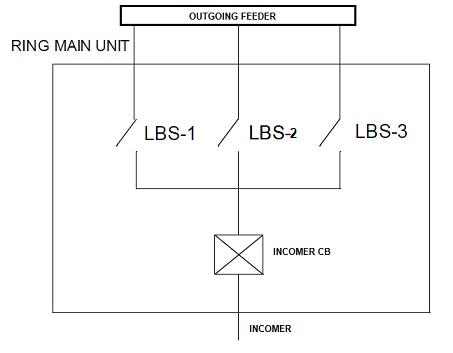Ring Main Unit (RMU) Overview and Benefits
A Ring Main Unit (RMU) is a vital piece of switchgear commonly used in power distribution systems. Its primary components include:
An RMU typically comprises three switches configured for flexible power management:
The RMU plays a critical role in secondary distribution systems, ensuring a redundant power supply for enhanced reliability. It is primarily designed to provide an uninterrupted power supply (UPS) by allowing power to flow through alternate paths when needed.
The RMU is a metal-enclosed unit that connects to transformers via:
Ring main cables enter and exit the RMU cabinet, allowing seamless integration into the medium-voltage (MV) distribution network, typically ranging from 7.2kV to 36kV.
Initially introduced in the UK, RMUs are now widely adopted globally. In North America, a similar concept is implemented within pad-mounted transformers, where transformers and switches are integrated into a single enclosure.
The RMU connects to transformers either through a standardized bus throat or cables and is typically installed outdoors. Its primary functions include:
The RMU is an innovative and comprehensive solution for modern power distribution challenges. Its key benefits include:
Ease of Integration
RMUs can be seamlessly integrated with intelligent electrical devices, making them a preferred choice for automated systems.
High Efficiency and Reliability
Modern RMUs incorporate advanced technology and compact designs, ensuring optimal efficiency, reliability, and safety.
Time and Cost Savings
The RMU is easy to install, saving time and reducing installation and commissioning costs.
Climate Independence
RMUs are highly resistant to environmental conditions, making them suitable for use in various climates.
Low Maintenance Costs
With a robust design, RMUs offer low operational and maintenance expenses over their lifespan.
Space Efficiency
Featuring a compact, SF6-insulated design, the RMU requires minimal space for setup and operation.
Enhanced Features
Below is a simplified schematic diagram of a ring main unit.

RMUs are classified into three main types based on their insulation:
The transformer isolation switch in an RMU may be a fusible switch or a circuit breaker, utilizing:
These types of RMUs may also include protective relays for advanced fault protection and system reliability.
The RMU is a versatile, compact, and reliable piece of switchgear that simplifies medium-voltage distribution. Its innovative design, ease of integration, and cost-effective operation make it a cornerstone of modern power systems. By addressing challenges in electrical distribution, RMUs enhance efficiency, reliability, and safety while significantly reducing maintenance and operational costs.